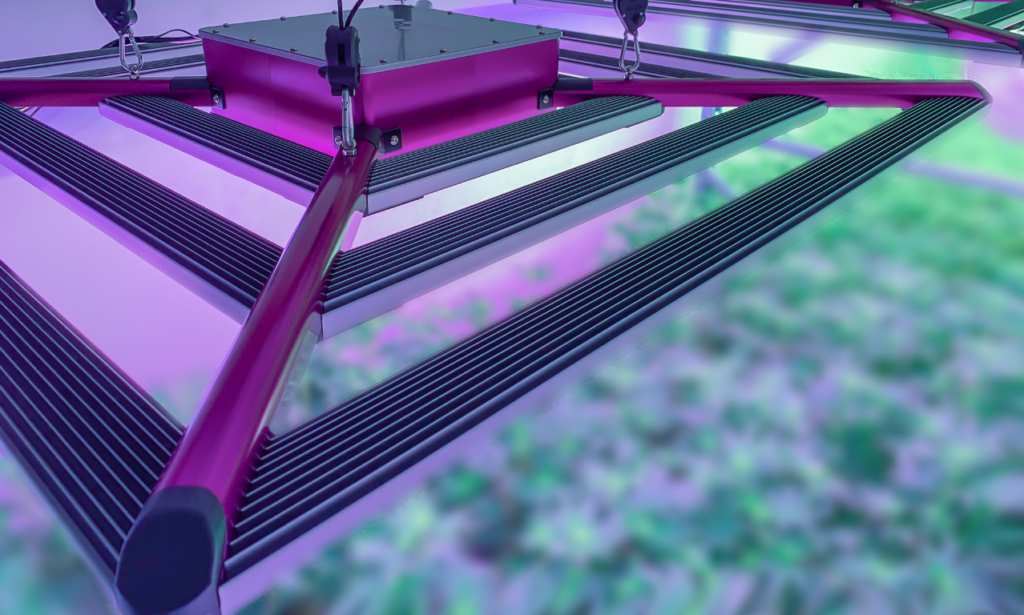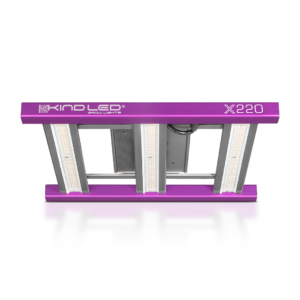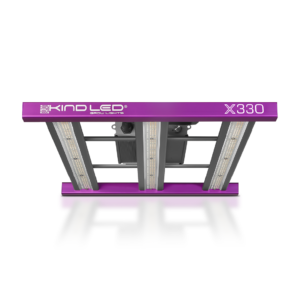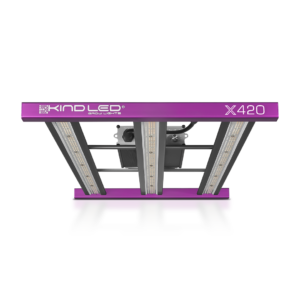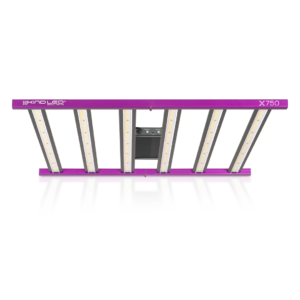Full-Spectrum is a term that has been used in the horticultural lighting industry for years, since the first grow lights entered the market. But what exactly does “full-spectrum” mean?
The term full-spectrum was used in the 1960s by photobiologist Dr. John Ott to describe electric light sources that simulate the visible and ultraviolet (UV) spectrum of natural light (source). Full-Spectrum lighting technically means that a light covers all wavelengths of the electromagnetic spectrum that are helpful to plants. However, the ratio of these wavelengths can differ widely between fixtures. One thing that all full-spectrum LED grow lights have in common is that they all tend to mimic the look of natural light.
Full Spectrum LED Grow Lights
The range of wavelengths which are most helpful to plants falls between 400 and 700 nanometers, and is commonly referred to as PAR, or Photosynthetically Active Radiation. This range of light supports the process of photosynthesis. However, while all light within this spectrum is helpful to plants, it’s not all helpful in the same amounts.
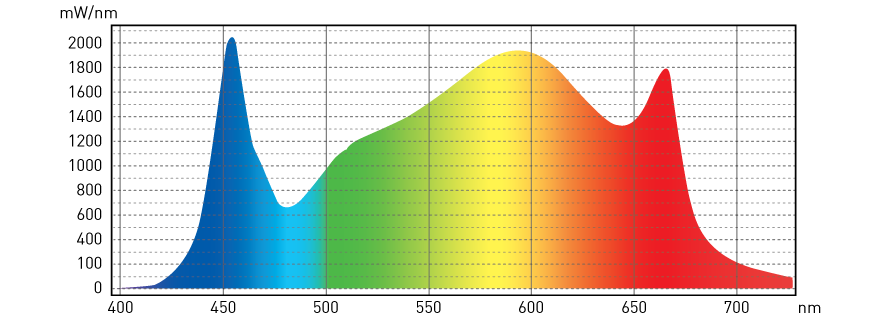
To mimic the look of natural light, full-spectrum LED grow lights include a large amount of green and yellow light. While these spectrums play a vital role in plant development, they are effective in considerably smaller amounts than red and blue light. The amount produced by white light LED manufacturers far exceeds the amount a plant can actually absorb, and more than 50% of that light winds up reflected from the plant’s surface. That wasted energy, in and of itself, is costing you money in power, but it also gets turned into heat, raising the temperature of the grow environment. This heat can have a detrimental effect on plants, even potentially damaging trichome production, and also forces the grower to invest money in additional cooling equipment and increase their watering schedules.
In addition to the problems noted above, studies have shown that a low percentage of green light (≤ 24%) actually enhances plant growth, whereas plant growth is inhibited under a higher percentage of green light. Furthermore, green light has been proven to have an antagonistic effect on THC levels. For commercial cannabis cultivation, this is a huge deterrent to growing with full-spectrum white light LED fixtures.
The horticultural lighting industry is overrun with white-light LED fixtures, and they are commonly found in commercial grow facilities. The primary reason these white light LEDs are so common is that white light diodes are already used in every industry imaginable for human visibility. The research and development into white light diodes is much further along—they are readily produced by several reputable companies, and because of this availability are considerably less expensive than producing a diode with a specially targeted spectrum. This means bigger profits for the companies using these diodes. Ultimately, manufacturing white light LEDs is a business decision that several companies have made, and marketing has spun a cost-saving measure into a selling feature, and has convinced a large percentage of growers that it’s a decision they should make as well along the way.
Targeted Full Spectrum LED Grow Lights
The facts dictate that Full-Spectrum grow lights may not be the ideal lighting solution for growing indoor plants. While we can’t argue that the sun does a pretty fantastic job of growing plants outdoors—one need only to look outside to see that it seems to handle the job pretty well—it’s a gigantic ball of endless nuclear energy that one wouldn’t necessarily want to bring inside their commercial grow facility. For one thing, the sun doesn’t have to worry about utility bills. So replicating natural light has the unfortunate side-effect of including quite a bit of the visible spectrum which simply cannot be absorbed by plants, and winds up simply being wasted—having a negative effect both on the grow environment and the grower’s pocketbook.
This is where targeted-spectrum grow lights come into play. Targeted-spectrum grow lights, like the X2 from Kind LED Grow Lights, turn to light science to produce only the wavelengths of light that most benefit plant growth while avoiding the wastefulness that plagues the white-light LED market.
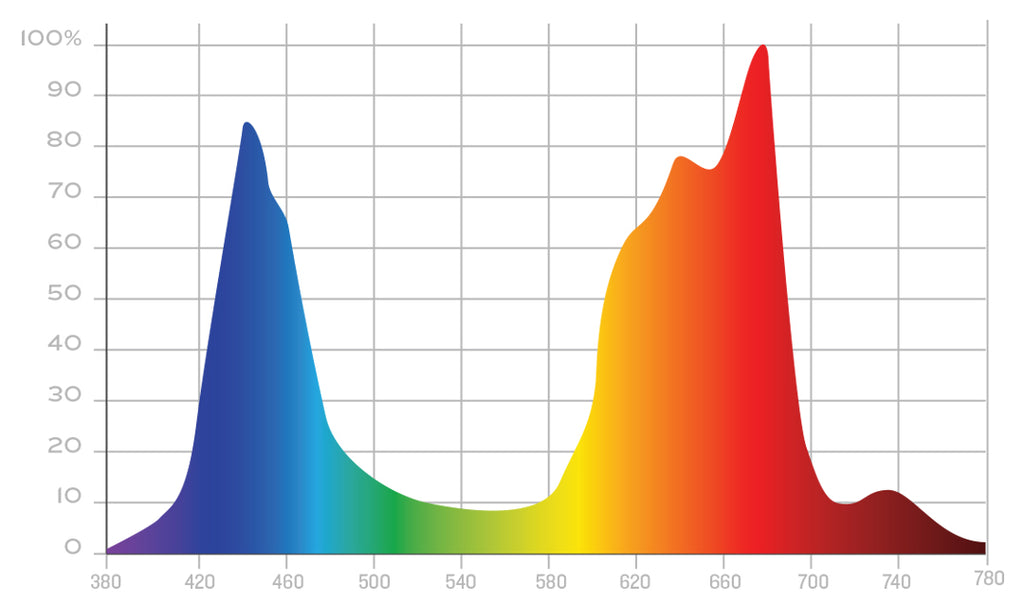
Decades of light science research have taught us some fundamental facts about how plants interact with light. We know that the blue part of the spectrum is most effective during the vegetative stage of a plant’s growth cycle, while red light is ideal for the flowering cycle. For this reason, reputable LED grow light manufacturers engineer their spectrum to focus on the parts of the spectrum that most benefit plants, not humans. Certain fixtures even allow the grower to adjust that spectrum throughout their plant’s life cycle, allowing growers unprecedented control over the growth of their plants.
Targeted-spectrum LED grow lights limit the amount of yellow and green light a fixture emits, which decreases the amount of energy wasted by the fixture, and consequently, the amount of heat produced. This in turn reduces the need for additional cooling measures needed in your grow environment, and can lower utility bills significantly.
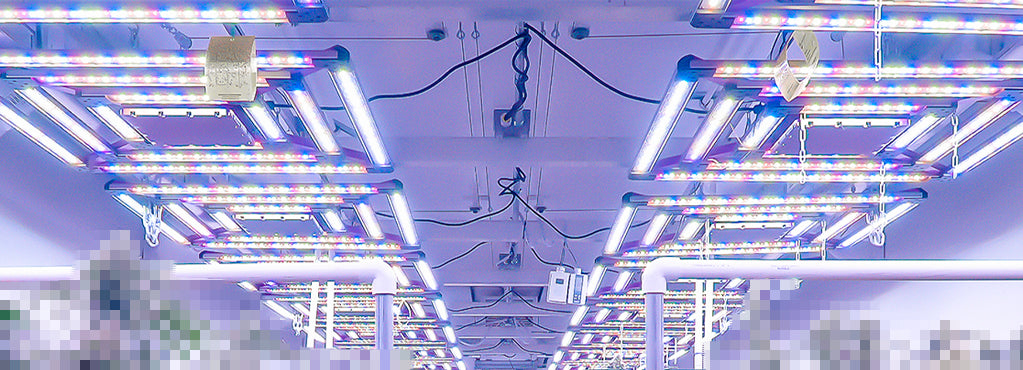
Since the primary focus of targeted-spectrum LED grow lights is on the blue and red parts of the visible spectrum, the light produced looks purple, or even pink. Because of this, some growers have started to refer to these fixtures as “blurple” LED grow lights. While white-light LED manufacturers have long used this difference in appearance as validation that full-spectrum fixtures are ideal for grow environments, it’s important to remember that LED grow lights exist for the benefit of plants, not people. White-light LEDs may be easier to manufacture, and photograph better, but these are human conveniences. A targeted spectrum is much more beneficial to plants, and ultimately, that is what matters for growers everywhere, from home growers to commercial cultivation facilities.
In conclusion, while “full-spectrum” has historically been a bit of a vague term in the LED grow light industry, we can now definitely conclude that the benefits of these fixtures exist much more for humans than they do plants. Targeted-spectrum grow lights, on the other hand, have tremendous benefits for both humans and plants. They provide plants with everything they need for lush, healthy growth, and save growers a considerable amount of money while giving them complete control over the fixture’s spectrum. It’s safe to say that targeted-spectrum grow lights are truly the best of both worlds.
